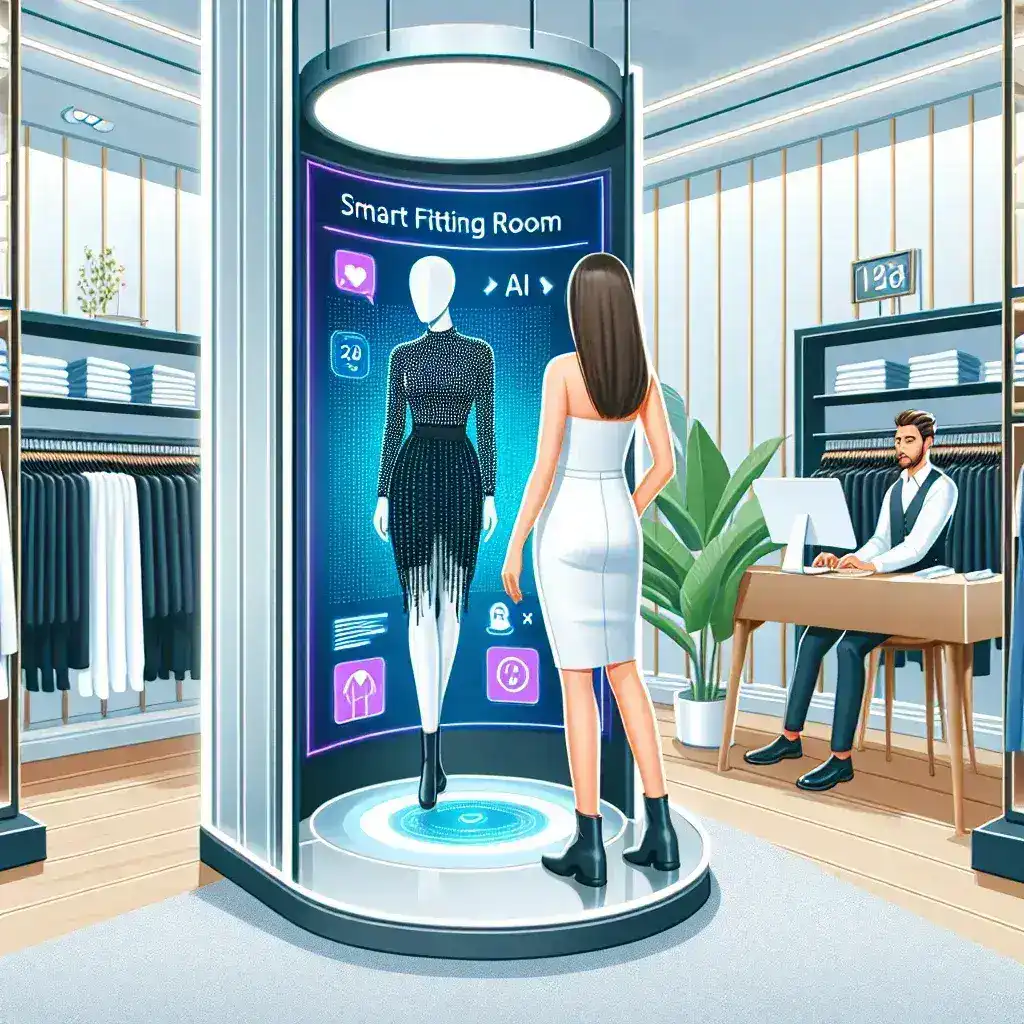Introduction
In an era where technology intertwines with our daily lives, retail giants are not lagging behind in adopting innovations that enhance the shopping experience. Target, a leading player in the U.S. retail market, is taking a significant step by piloting AI powered smart fitting rooms across select stores. This initiative promises to transform how consumers interact with apparel and fashion, making the shopping experience more efficient and enjoyable.
The Vision Behind Smart Fitting Rooms
As the retail landscape evolves, understanding customer behavior becomes paramount. Target aims to leverage artificial intelligence to create smart fitting rooms that provide personalized recommendations and streamline the shopping process. The primary goal is to reduce the time customers spend trying on clothes while enhancing their overall shopping experience.
Historical Context
The concept of fitting rooms has remained relatively unchanged for decades. Traditionally, customers would select items, head to a fitting room, and try them on. However, with the advent of e-commerce and mobile shopping, customer expectations have shifted significantly. Retailers are now challenged to provide experiences that rival the convenience of online shopping.
The Role of AI in Retail
Artificial intelligence has been a game-changer in various sectors, and retail is no exception. By utilizing AI technology, retailers can analyze vast amounts of customer data, predict trends, and offer personalized experiences. Target’s smart fitting rooms will utilize machine learning algorithms to enhance the fitting room experience.
How Target’s Smart Fitting Rooms Work
Target’s AI powered smart fitting rooms are designed to provide customers with a seamless and interactive experience. Here are some key features:
- Interactive Mirrors: These mirrors will allow customers to see how different outfits look on them without having to physically try them on. The technology can suggest different sizes, styles, and even colors.
- Virtual Styling Assistant: Customers can receive styling advice based on their preferences. The AI system can analyze the customer’s body shape and suggest styles that would best suit them.
- Inventory Management: By connecting to Target’s inventory system, the smart fitting rooms can inform customers about available sizes and colors in real-time, reducing the frustration of searching for items.
- Feedback Collection: After using the fitting room, customers can provide feedback on their experience via the interactive mirror, allowing Target to continuously improve the service.
Benefits of AI Powered Smart Fitting Rooms
The introduction of AI powered fitting rooms offers several advantages:
- Enhanced Customer Experience: By providing personalized recommendations and streamlining the fitting process, customers are more likely to enjoy their shopping experience, leading to increased sales.
- Increased Efficiency: Shoppers will spend less time trying on clothes, which can lead to reduced wait times and improved store efficiency.
- Data-Driven Insights: Target can gather valuable data on customer preferences and behaviors, which can inform future product offerings and advertising strategies.
Challenges and Considerations
While the potential benefits of AI powered smart fitting rooms are significant, there are also challenges to consider:
- Privacy Concerns: Customers may have reservations about data collection and how their information is used. Target will need to ensure transparency and address privacy issues.
- Technology Reliability: The success of the smart fitting rooms hinges on the reliability of the technology. Any issues with the system could frustrate customers and negate the intended benefits.
- Integration with Existing Systems: Implementing AI technology requires integration with Target’s current systems, which may pose challenges in logistics and operations.
Real-World Examples of AI in Retail
Target is not alone in adopting AI technology in retail. Other major retailers, such as Amazon and Walmart, have also implemented AI solutions to enhance their shopping experiences. For instance, Amazon Go stores utilize AI to allow customers to shop without checkout lines, showcasing how technology can redefine the retail landscape.
Future Predictions for Smart Fitting Rooms
As more retailers adopt AI technology, the future of smart fitting rooms looks promising. We can expect:
- Wider Adoption: More retailers will likely invest in AI powered fitting rooms to compete in the market.
- Improved Customer Engagement: The use of AI will lead to more interactive and engaging shopping experiences, increasing customer loyalty.
- Integration with E-commerce: Smart fitting rooms may integrate with online shopping platforms, allowing customers to seamlessly switch between in-store and online experiences.
Conclusion
Target’s initiative to pilot AI powered smart fitting rooms represents a significant leap forward in the retail space. By enhancing the customer experience through personalization and efficiency, Target is well-positioned to lead the charge in retail innovation. As the pilot progresses, it will be interesting to observe how customers respond and how the technology evolves in alignment with consumer needs.
In conclusion, the fusion of technology and retail is not just a trend; it is the future. As Target embraces this shift, other retailers will undoubtedly take note, paving the way for a more sophisticated and customer-centric shopping environment.

Leave a Reply